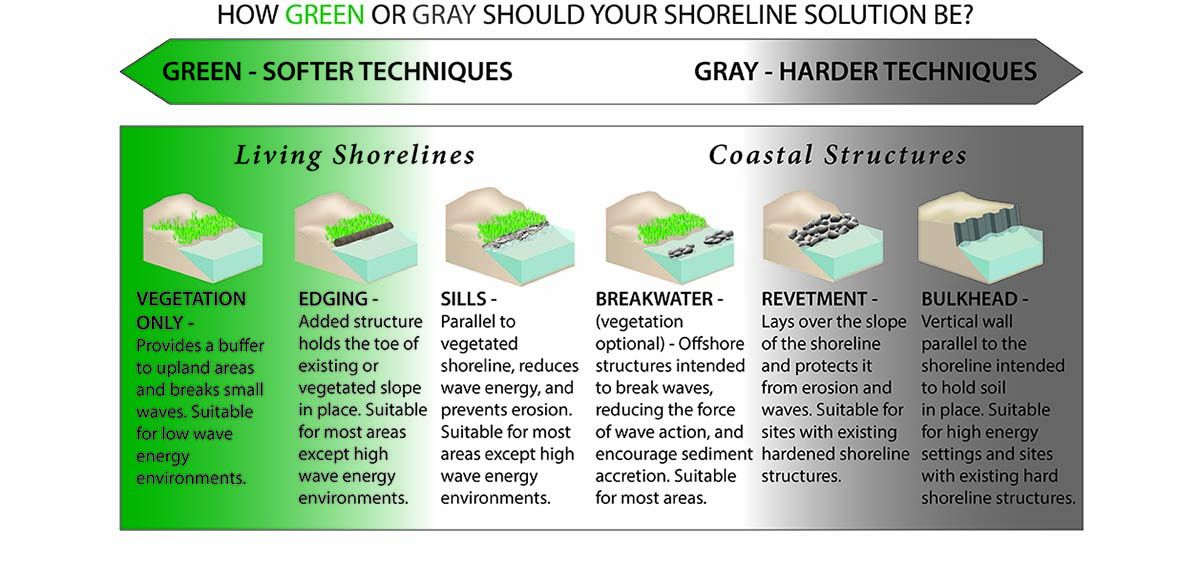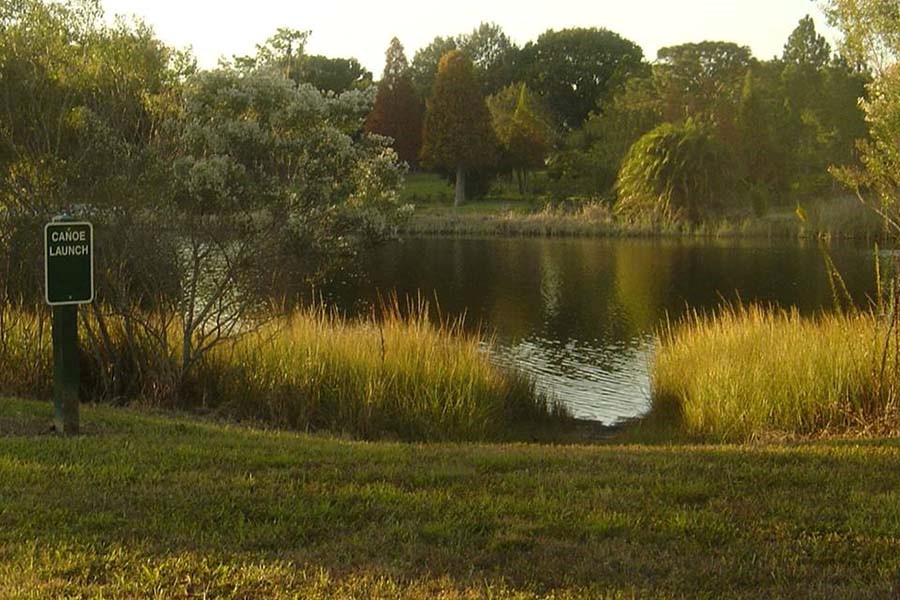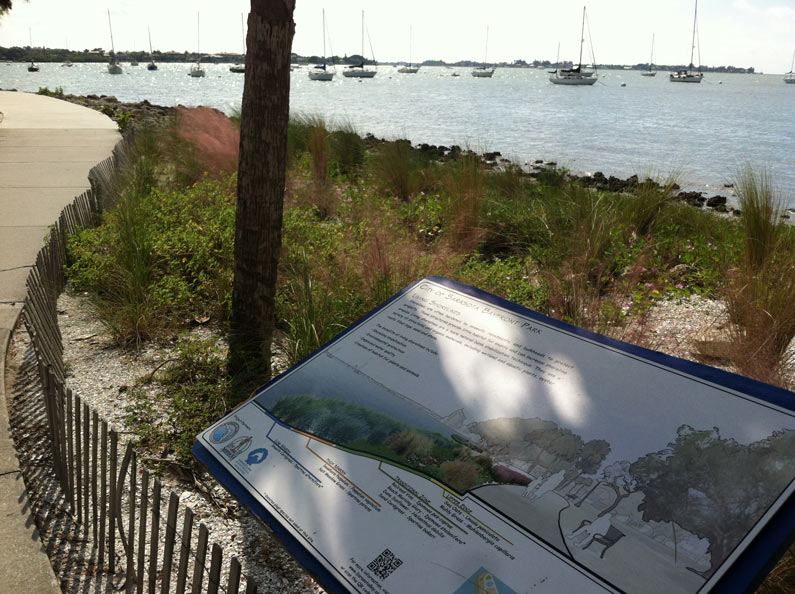What is a Living Shoreline?
"A shoreline management practice that provides erosion control benefits; protects, restores, or enhances natural shoreline habitat; and maintains coastal processes through the strategic placement of plants, stone, sand fill, and other structural organic materials (e.g. biologs, oyster reefs, etc).”
When protecting coastal properties, a living shoreline (LSL) approach represents a “softer and greener” alternative to “gray” approaches such as traditional hard armoring (e.g., seawalls and bulkheads). A LSL uses natural materials to stabilize the shoreline and maintain valuable fish and wildlife habitat. Living shoreline projects utilize a variety of materials such as wetland plants, oyster shell, coir fiber logs, sand, wood, and native rock. Every LSL should be the result of thoughtful, careful consideration of each project site and strategic placement of natural components along the shoreline profile.

Living Shorelines take a ‘greener’ approach to stabilizing the shore, as seen in the options toward the left of this diagram from the Natural and Structural Measures for Shoreline Stabilization brochure created by the Systems Approach to Geomorphic Engineering (SAGE 2015). Diagram from NOAA Living Shorelines.

A Living Shoreline constructed in Panama City, Florida using plants and oyster shell.
When constructed correctly, a LSL not only provides erosion control, but also maintains coastal processes. Like naturally-vegetated coastlines, LSLs can help reduce wave energy and storm impacts, reduce erosion and property loss, trap sediments, improve water clarity, filter pollutants, preserve coastal resiliency, provide recreational opportunities, and provide important fish and wildlife habitat.

A living shoreline that allows access for recreation in Tampa, Florida.
Keep Exploring!

Providing information through signs and online content helps people better appreciate and understand LSL projects around the state. At this waterfront park in Sarasota, the shoreline is stabilized by native plants and rock.
